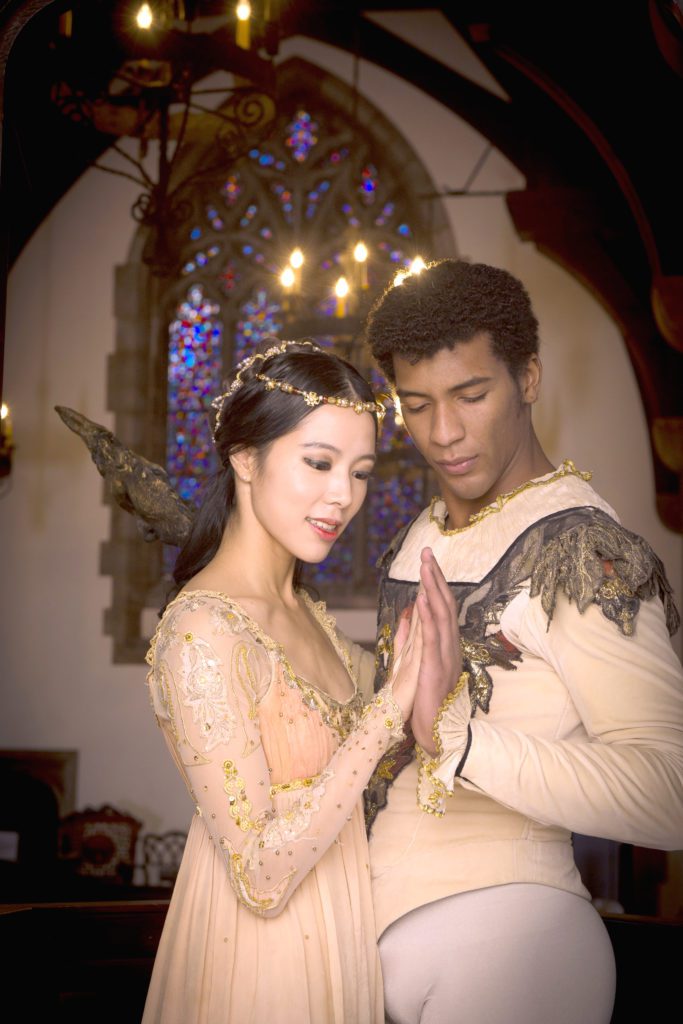Tragic Love, Choreographed by Cranko
By • February 7, 2018 0 600

To spark some much-needed love and reconciliation in the nation’s capital — where Republicans and Democrats are acting like Montagues and Capulets — the Washington Ballet is presenting “Romeo & Juliet” at the Kennedy Center Opera House on Valentine’s Day and over the following weekend, Feb. 14 to 18. Performances are Wednesday, Thursday and Friday at 7:30 p.m.; Saturday at 1:30 and 7:30 p.m.; and Sunday at 1:30 p.m.
This “Romeo & Juliet,” choreographed by John Cranko, premiered in 1962 in Stuttgart, in what was then West Germany. The fully staged, three-act ballet, a company premiere, will be danced in period costume to a live performance of Sergei Prokofiev’s score by the Washington Ballet Orchestra, conducted by Beatrice Affron, Pennsylvania Ballet’s music director.
The presentation of a story ballet — in this case, a modern classic — with full orchestra is a natural choice for Julie Kent, the celebrated American Ballet Theatre principal dancer who became the Washington Ballet’s artistic director in 2016. “These characters played a special role in my career, and I’m excited to share them with new audiences here in Washington,” she said. Juliet was the last role that Kent performed with ABT, in 2015, though in Kenneth MacMillan’s version.
Matching the drama of Shakespeare’s play in condensed form, Prokofiev’s score was composed in 1935 for the Kirov (now the Mariinsky) Ballet in Leningrad (now Saint Petersburg). Political and critical controversy — in the initial version of the ballet, Shakespeare’s star-crossed lovers managed to work things out instead of (spoiler alert) killing themselves — caused the premiere to be delayed until 1940. Both Cranko and MacMillan were first inspired to set the ballet after seeing the Bolshoi Ballet’s touring production in 1956 at London’s Covent Garden, with the original choreography by Leonid Lavrovsky and the original Juliet, Galina Ulanova.
A South African-born dancer who moved to London in 1945, John Cranko became resident choreographer for Sadler’s Wells Theatre Ballet in 1950 in his early 20s. In 1961 (in part due to his arrest for “persistently importuning men for an immoral purpose” two years earlier), he left England to become founding director of the modern Stuttgart Ballet, helping to make the company an international standout.
In Stuttgart, he choreographed “Romeo & Juliet” for his soon-to-be muse, Marcia Haydée, then two other story ballets considered masterpieces, “Onegin” and “The Taming of the Shrew.” Cranko died in 1973 on a flight back to Stuttgart from Philadelphia, where the company had performed at the Academy of Music, fatally choking after taking a sleeping pill. The Brazilian-born Haydée took over as director until 1995; she now, at 80, leads the Santiago Ballet in Chile.
Prior to Cranko’s version, in 1955, Frederick Ashton choreographed a “Romeo & Juliet” for the Royal Danish Ballet. MacMillan’s was created for a 1965 production by the Royal Ballet (the British one), danced by Margot Fonteyn and Rudolf Nureyev. Other choreographers who have taken on the colorful, ominous, unmistakably Russian music (portions will be familiar from orchestral performances) include Nureyev in 1977, with himself as Romeo; Peter Martins in 2007; Mark Morris in 2008; and Alexei Ratmansky in 2011.
Cranko was a master of pas de deux, which will be danced in the Washington Ballet production by four Romeo-and-Juliet pairs: Brooklyn Mack — who partnered Misty Copeland in the Washington Ballet’s 2015 “Swan Lake” — and Maki Onuki (Wednesday and Saturday evening); EunWon Lee and Gian Carlo Perez (Thursday and Saturday matinee); Corey Landolt and Venus Villa (Friday); and Jonathan Jordan and Ayano Kimura (Sunday matinee).
The production was staged by Jane Bourne, who has mounted Cranko ballets around the world, and supervised by Stuttgart Ballet Artistic Director Reid Anderson. Sets and costumes and lighting design are by Canadians Susan Benson and Robert Thomson, respectively.

